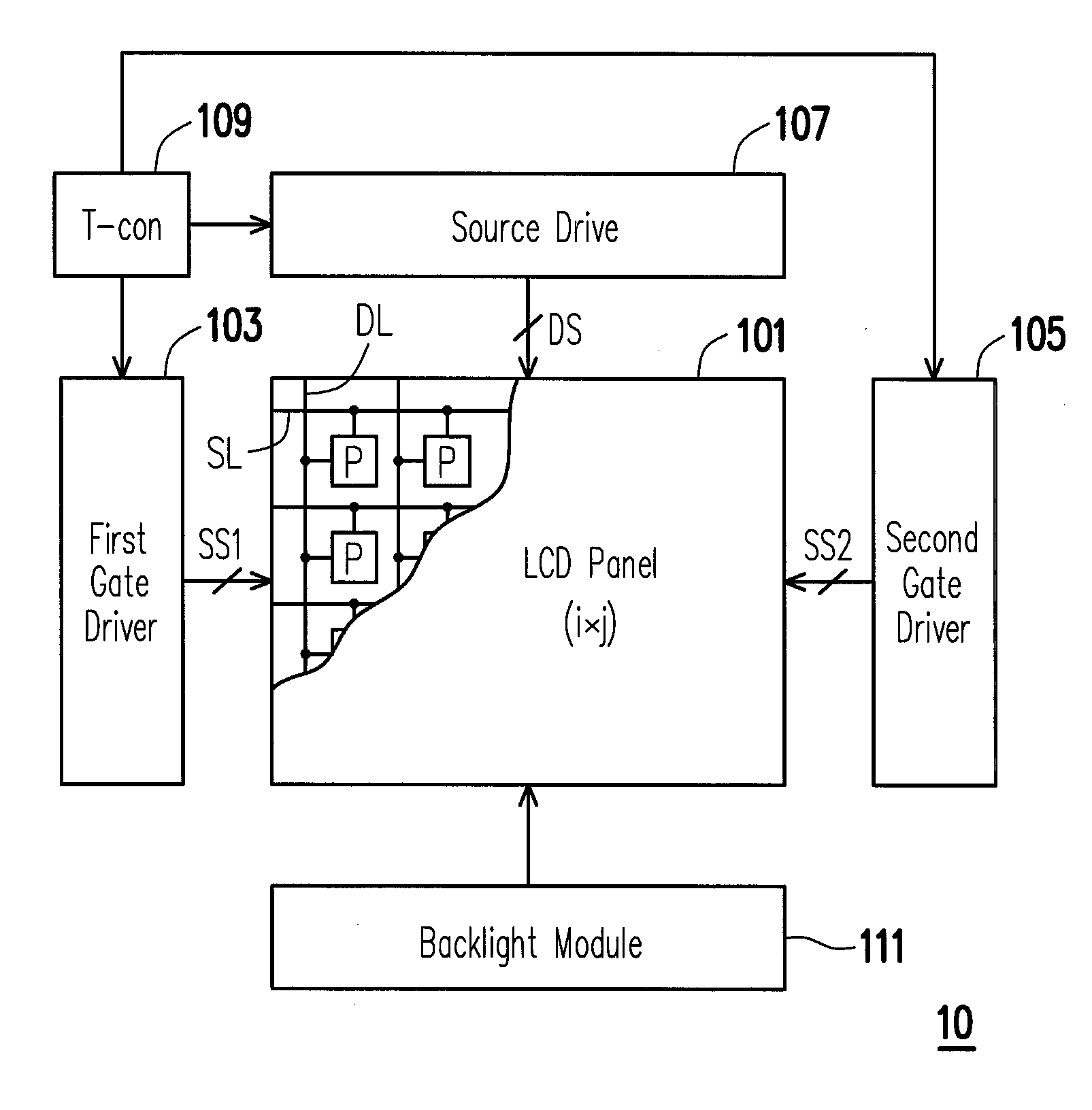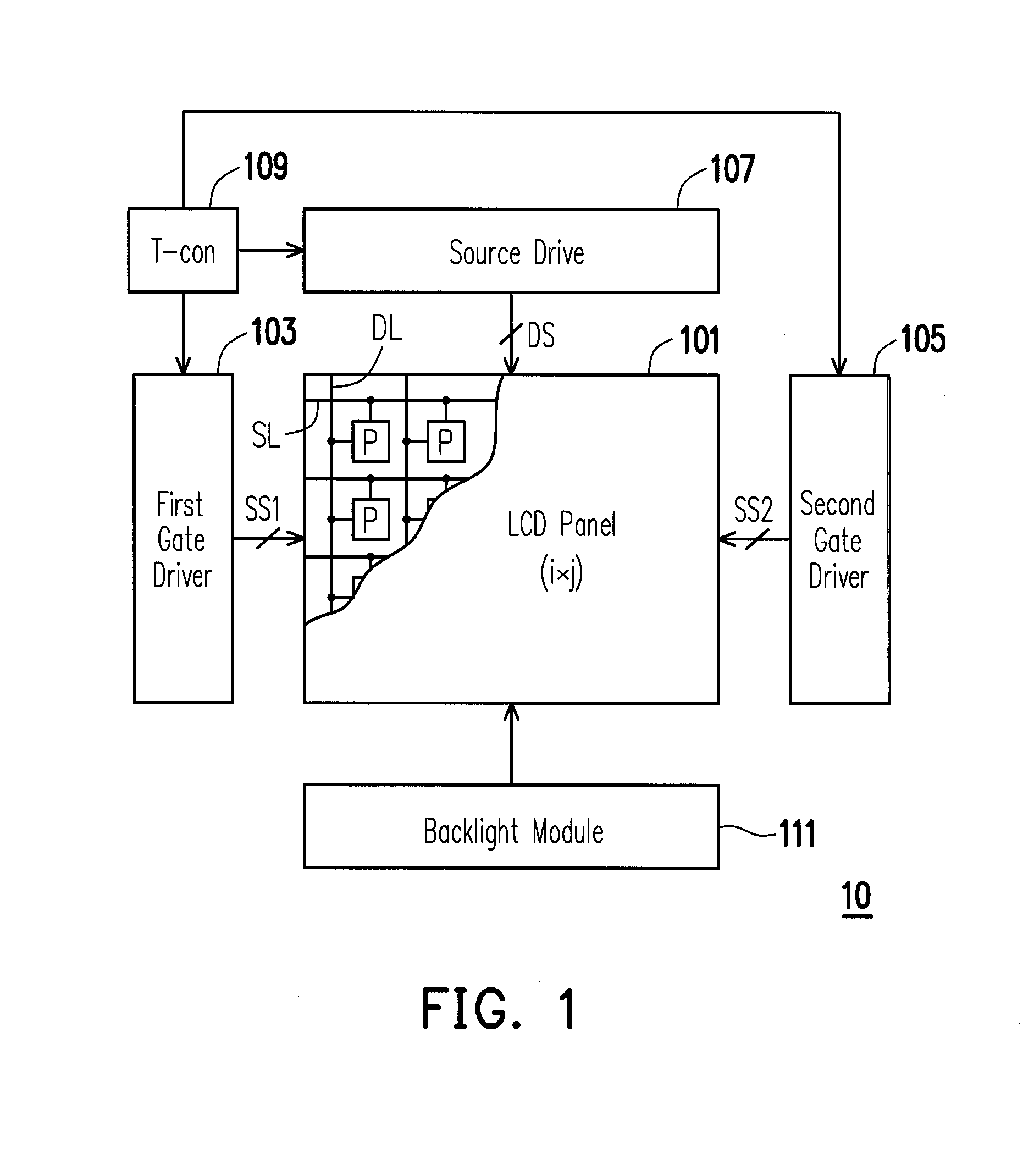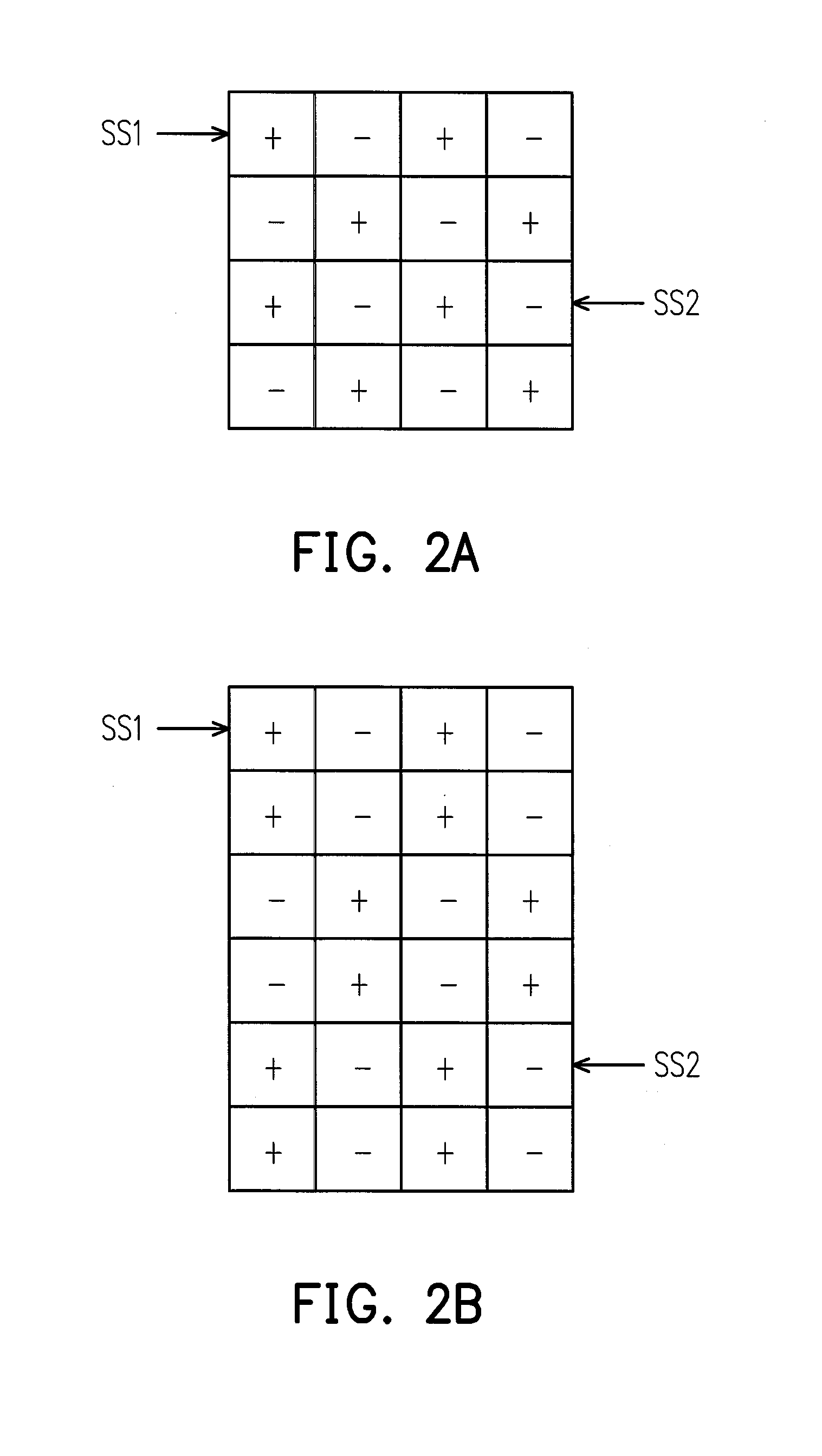Liquid crystal display and method for driving panel thereof
- Summary
- Abstract
- Description
- Claims
- Application Information
AI Technical Summary
Benefits of technology
Problems solved by technology
Method used
Image
Examples
Embodiment Construction
[0019]Reference will now be made in detail to the present preferred embodiments of the disclosure, examples of which are illustrated in the accompanying drawings. Wherever possible, the same reference numbers are used in the drawings and the description to refer to the same or like parts.
[0020]FIG. 1 illustrates a system block diagram of a liquid crystal display (LCD) 10 according to one embodiment of the present invention. Referring to FIG. 1, the LCD 10 includes an LCD panel 101, a first gate driver 103, a second gate driver 105, a source driver 107, a timing controller (T-con) 109, and a backlight module 111. The LCD panel 101 includes a plurality of scan lines SL, a plurality of data lines DL, and a plurality of pixels P arranged in array. Each pixel P is electrically connected with the corresponding one of the data lines DL and the corresponding one of the scan lines SL.
[0021]The first gate driver 103 is coupled to the LCD panel 101 for sequentially generating a plurality of fi...
PUM
 Login to View More
Login to View More Abstract
Description
Claims
Application Information
 Login to View More
Login to View More - R&D
- Intellectual Property
- Life Sciences
- Materials
- Tech Scout
- Unparalleled Data Quality
- Higher Quality Content
- 60% Fewer Hallucinations
Browse by: Latest US Patents, China's latest patents, Technical Efficacy Thesaurus, Application Domain, Technology Topic, Popular Technical Reports.
© 2025 PatSnap. All rights reserved.Legal|Privacy policy|Modern Slavery Act Transparency Statement|Sitemap|About US| Contact US: help@patsnap.com



